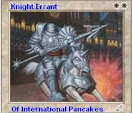The first is about the statics of the position, the second is about the dynamics of the position.
I want to know more about this subject, so I will investigate another endgame position. After all, I want to get better where I'm worst.

.
.
.
.
White to move.
Evaluation of the statics.
First let's talk about the statics of the position.
The pawns on the kingside are pretty much equal.
White has the majority on the queenside, so he has a potential passer there.
If you think away the pieces, this is a won pawn ending for white:
- Bring the king to the queenside.
- Trade pawns, creating an outside passer.
- Walk to the kingside while black looses tempi to get rid of the passer.
- Eat the kingside pawns
- Promote a pawn
- Mate the king
If we put the rooks back on the board, the position might become even more problematic.
Rook endings with only one plus pawn tend to be drawish. Especially when the passer is a rook pawn.
From a static point of view, white would like to get rid of the pieces.
If white is able to do so, depends on the dynamics of the position.
Evaluation of the dynamics.
Dynamics are about pieces and targets. The king and weak pawns are the natural targets of the chess game since they move slow. The chances to mate a king in this position are rather unlikely. So both kings are safe. On the black side, pawn c7 is the obvious target.
On the white side one of the pawns b2 or a3 might become a target later on. Further must white be careful with his pawns on the kingside that are on a light square. You don't want to allow a move like Bf1 at some moment.
Whites king is far from the center. White would like to play Kf2 at some moment, but the knight is blocking the f-pawn. Blacks king is closer to the action.
The goal of white is to trade pieces. In order to exchange pieces, you must immobilize them first. You can immobilize a piece by forcing it to defend. The most logical target is c7. Before you can attack a target, you must fix it. So b4 at some moment is a logical move. That implies defense of a3, so Rc3 at some moment makes sense too.
Further I don't have a clear vision about the position yet, but I'm going to investigate it further. Especially the invasion squares are of interest.

No comments:
Post a Comment